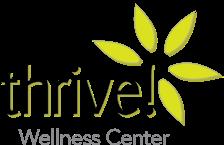
5 minute read
HEALTHY HOME
HEALTHY HOME, HEALTHY KIDS How to Keep Them Safe
by Ronica O’Hara
Ahealthy home for kids looks much like what’s needed for a healthy planet: clean air, clean water and clean food, all of which create a space in which our children can be well and thrive. This means taking active steps to eliminate everyday contaminants that can harm their developing organs and brains. “Children are not mini-adults. Their bodies cannot filter out toxins and chemicals as effectively as a full-grown adult body can,” says Kimberly Button, author of The Everything Guide to a Healthy Home: All You Need to Know to Protect You and Your Family from Hidden Dangers. Here are some practical steps to take.
Clean Air n Clean “green”. The chemicals in popular disinfectants alter children’s gut microbes and heavy use leads to higher body mass index by age 3, reports Canadian researchers; eco-friendly cleaning agents do not harm kids’ health, they found. A solution of one part white vinegar to three parts water can be used to clean counters, floors and toilets. The acetic acid in vinegar can deactivate even the flu and tuberculosis viruses, recent studies have shown.
n Get rid of mold. Mold, especially if it’s black, is highly toxic to children: a Polish study found it lowered IQs in children under 6. “When the mycotoxins in mold affect children’s developing nervous systems we may see fatigue, difficulty learning, and attention issues,” says naturopath Jill Crista of Janesville, Wisconsin, author of Break The Mold: 5 Tools to Conquer Mold and Take Back Your Health. She recommends mixing in a glass (not plastic) spray bottle essential oils, such as rosemary, holy

basil, tea tree or eucalyptus, spraying the mold, and using a disposable cloth to wipe it off. The essential oils “not only kill mold, but neutralize the toxins,” she says. “It won’t fix mold on porous surfaces, which require professional remediation.”
n Ban smoking. Children that breathe secondhand smoke are more prone to ear infections, coughs and colds, tooth decay and respiratory problems like asthma and pneumonia, and they miss more days of school, reports the American Academy of Pediatrics. Even smoke residue that clings to clothes, furniture, bedding and other surfaces can harm a child when this third-hand smoke is inhaled, absorbed or ingested.
Clean Water n Get a water test. Because children drink more water per pound than adults, even low levels of contaminants can impact their IQ and behavior. Check with the local health department to see if it offers free test kits, buy one at a hardware store or find a local lab by calling the U.S. Environmental Protection Agency Safe Drinking Water Hotline at 800-426-4791.
n Purify it. Several types of water purification systems, including tap-mounted, under-sink and pitchers, are effective and affordable, ranging from $20 to $300.
Seek filters certified by the National Sanitation Foundation testing agency that address contaminants identified by the water test.
Clean Food n Buy organic when possible. “Swapping to mostly organic foods is a good way to reduce your child’s daily toxic burden and reduce their risk of developing gut issues, autoimmune diseases, and food sensitivities and allergies,” says Caitlin Self, a licensed dietitian and functional nutritionist in Baltimore who blogs at FrugalNutrition.com. Using the list of the Dirty Dozen pesticide-laden produce compiled by the Environmental Working Group (ewg. org/foodnews) as well as its recommended Clean 15 makes shopping organic easier.
n Clean produce of pesticides. Simply rinsing produce under cold water for 30 seconds reduces pesticide residues for nine of 12 pesticides, a study by the Connecticut Agricultural Experiment Station found. Saltwater or vinegar rinses also remove pesticides effectively, and in a recent Journal of Agricultural and Food Chemistry study, soaking apples in one ounce of baking soda to 100 ounces of water for 15 minutes removed 80 and 96 percent of two pesticides, respectively, even under the skin of the fruit.
n Stock up on healthy snacks. After-school munchies are not only natural, but healthy. “Kids’ little tummies tend to need more frequent feedings than fully formed adults to ensure they have stable blood sugar,” says Self. Rather than highly processed crackers, pudding and most granola bars, offer combos like grapes with cheese, celery with peanut butter or hummus on whole-wheat bread. “Some parents will need to rely on some more packaged snacks to get through,” says Self, who recommends trail mix, fresh fruit or crispy chickpeas.
Ronica A. O’Hara is a Denver-based health writer. Connect at OHaraRonica@gmail.com.
$5.00 OFF Health Products!


Expires 4/30/20, one per customer, not valid on supplements except cod liver and butter oil.
Tired? Overweight? Stressed? Or just confused about your health? Dr. Shannon is a Nutrition Response Testing™ Master Instructor and uses Activator Methods Chiropractic. Check out our website to see our selection of healthy products! 6901 State Rd, Ste D, Saline • 734-470-6766 Thrive-Wellness-Center.com “Before I experienced a number of different symptoms ranging from trouble sleeping and night sweats to random pains and lumps. My diet was poor, lots of baked goods and coffee. I had issues with one of my knees from a car accident. I felt tired and stressed almost all the time. Since coming to Dr. Shannon I sleep through the night without issue, my knee pain has been reduced to almost the point of non-existence. I am no longer tired and stressed. Dr. Shannon has been able to help relieve the random pains I had. Mostly my diet has improved greatly and I understand how important it is for my health! – K.D. “ Thrive carries 100% Pure cosmetics, Ancient Minerals magnesium, Ice Chips candy, One World Whey protein, Young Living oils, and more!











